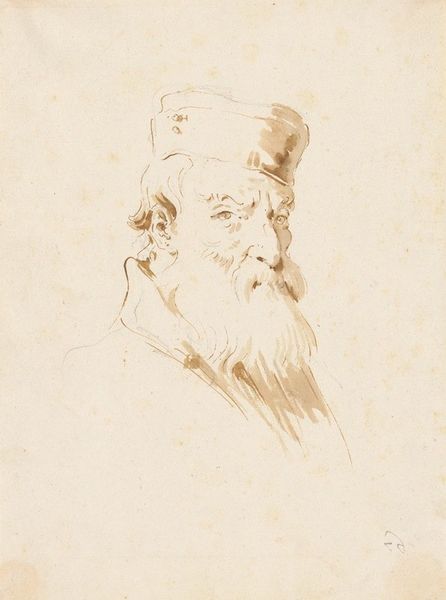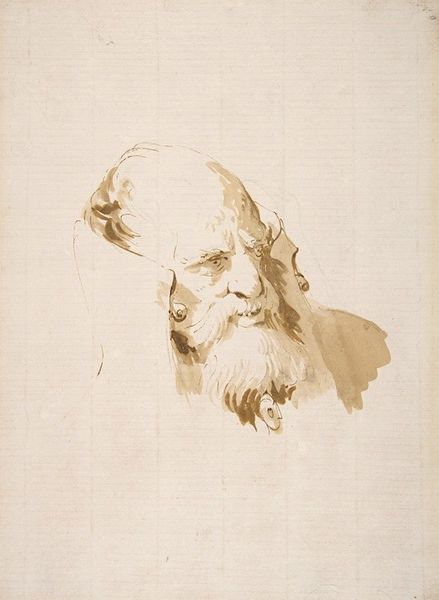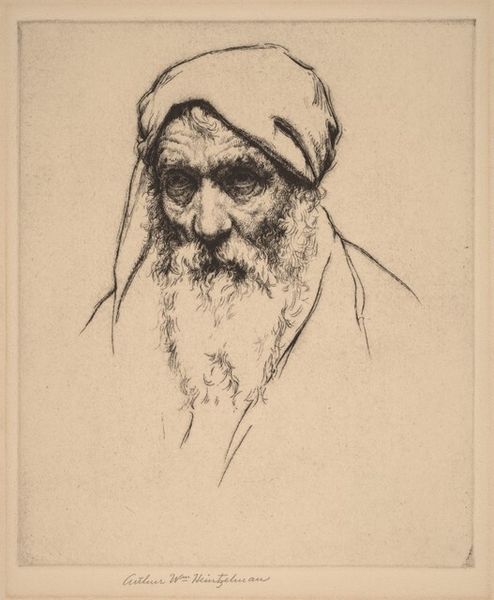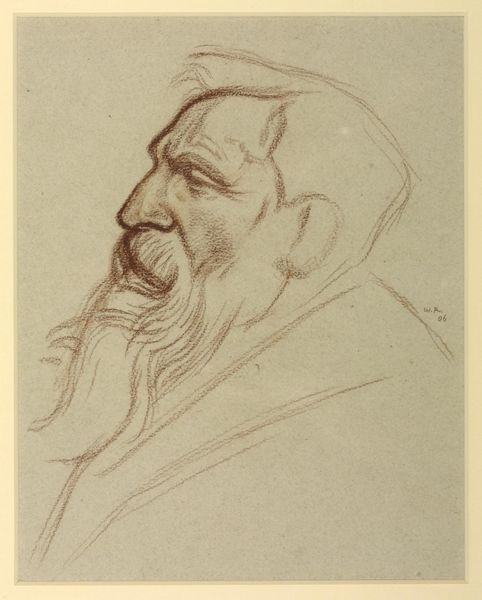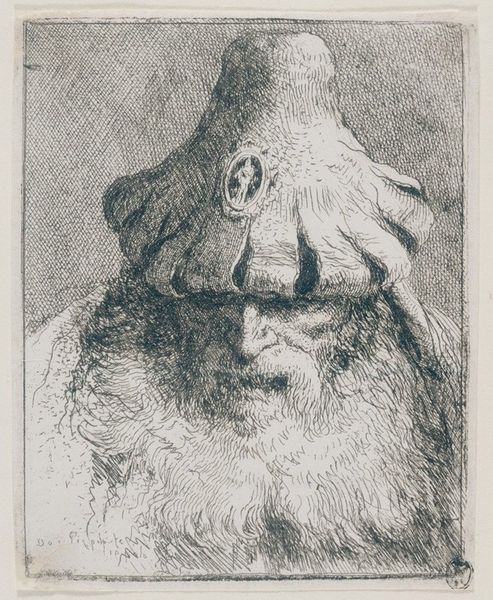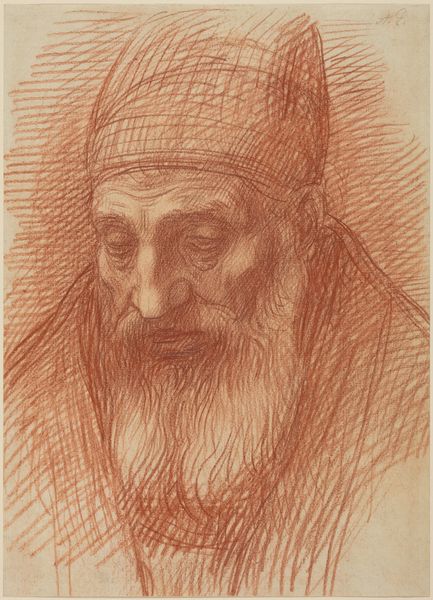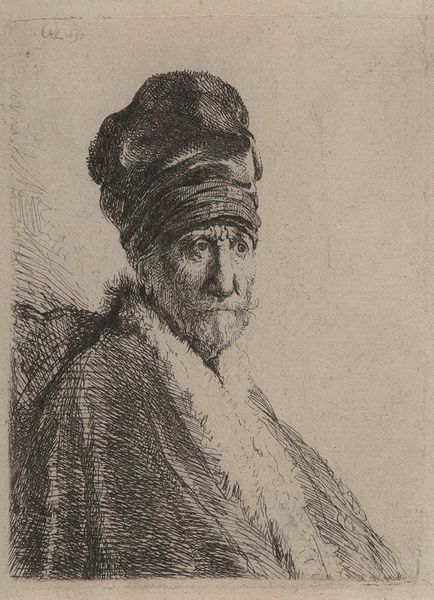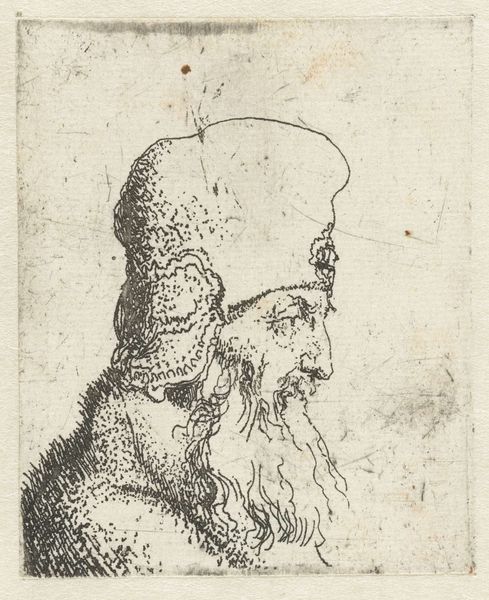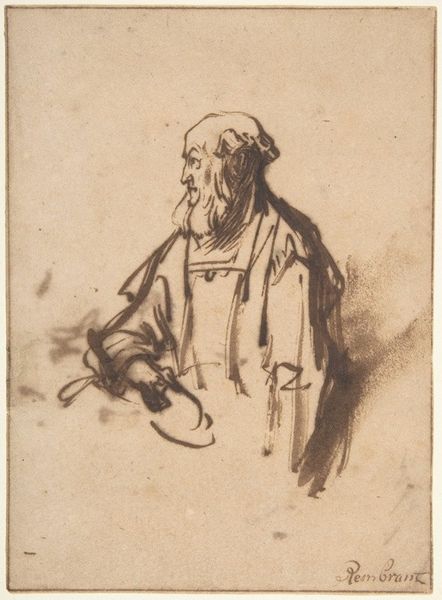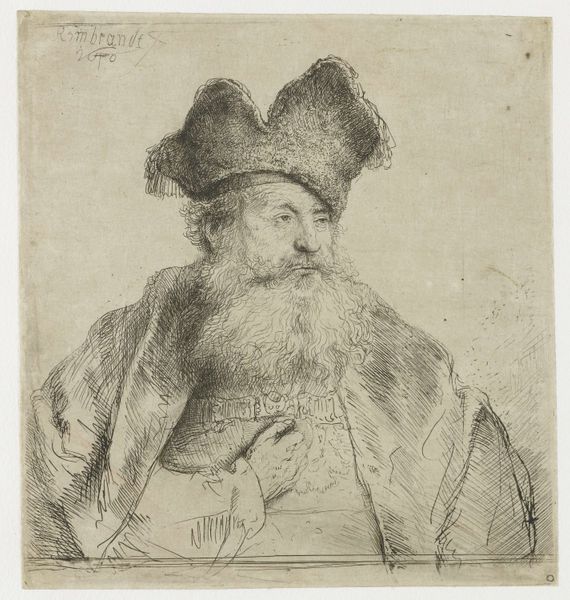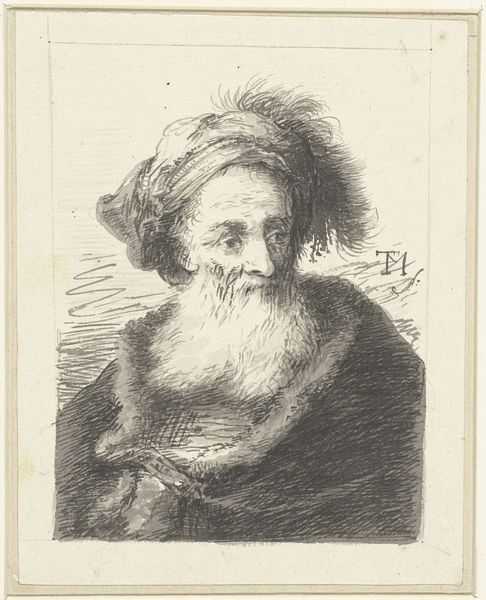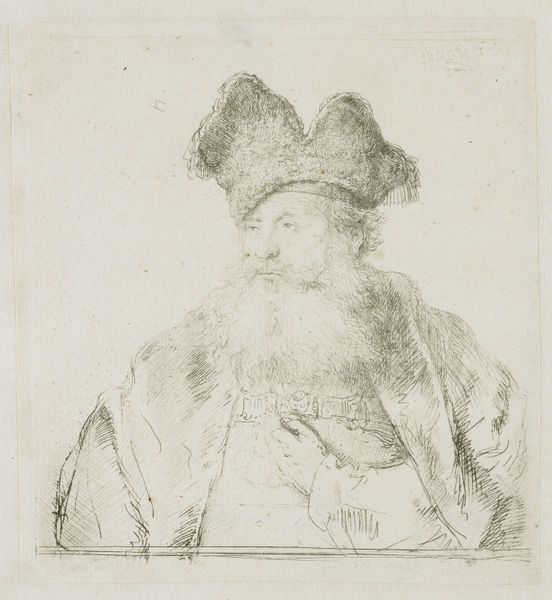
drawing, ink
#
portrait
#
drawing
#
baroque
#
ink
#
portrait drawing
Copyright: Public Domain: Artvee
Editor: We're looking at "Head of a Bishop," an ink drawing by Giovanni Battista Tiepolo from around 1742 to 1757. It feels like a quick study, almost ephemeral. What strikes you about it? Curator: It’s the very act of mark-making, the artist’s hand and the materials employed that command my attention. This isn't just about depicting a Bishop; it's about exploring the capacity of ink to create form and texture. Note how the varying pressures applied to the pen and brush generate light and shadow. Consider the quality of the paper, its interaction with the ink… Was this paper readily available? Did it influence Tiepolo’s choice of media? Editor: That's fascinating. I was focused on the subject matter, but the actual ink strokes create so much depth. Was drawing like this common practice at the time? Curator: Exactly! Drawing wasn't always a preliminary step for painting. Consider the economics. Drawings were often sold as independent works to a growing class of collectors. So, the skill involved in these quickly executed works demonstrates how art catered to specific markets and patronage networks. Notice also that the Baroque style is clear when observing its subject matter being an ornate high class figure. Editor: So, it's not just about capturing an image but also a demonstration of skill and a commodity in itself? Curator: Precisely. The value lies in both the representation and the inherent labor involved in its production. Tiepolo’s mastery of the medium translates into economic capital, and artistic prestige within a societal framework governed by consumption. Editor: I never considered that before. It makes me think differently about all art, not just as image, but object, and labour. Curator: Wonderful!
Comments
No comments
Be the first to comment and join the conversation on the ultimate creative platform.
